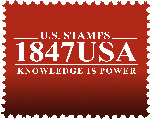Collecting Zeppelin Covers
By Bill Weiss

INTRODUCTION
The carraige of mail by airship began almost immediately with the earliest flights after the turn of the 20th century. The Zeppelin company soon realized that carrying mail, which appealed to collectors everywhere, could be a significant source of revenue. The public was also greatly facinated by the huge flying machines, and this played a part in the popularity of it for mailing letters. For years, it was the only form of trans-Atlantic airmail.
Aside from mail originating in the host country, mail was sent from numerous treaty states around the world. Many covers, since they were primarily prepared by philatelists, bear multiple-stamp frankings. Many countries issued special stamps for use on Zepppelin mail, and many of these frankings, particularly in complete sets on one cover, are among the aristocrats of this collecting field. A few are illustrated with this article.
COLLECTING COVERS CARRIED ON AIRSHIPS
Aside from the flights of the Zeppelin airships of Germany, other countries built airships or owned them, including the United States, Italy and Great Britain. France also had airships, but no mail was carried. Some collectors only collect Zeppelin mail. Others only collect a particular flight, such as the 1930 South America Flight (also known as the Europe-Pan-American Flight) or the 1933 Chicago Flight. Both of these have countless varieties and origins.

As with all other areas of collecting, what to collect is a highly personal decision. Numerous books exist loaded with information about the various airships, but for collectors of airship mail, there are, fortunately, only a few you need be concerned about. The AMERICAN AIRMAIL CATALOG has a useful section on airship mail, with descriptions and prices. MICHEL has a specialized Zeppelin catalog too, but the book considered by most specialists to be the "bible" on the subject is the ZEPPELIN POST KATALOG by Sieger. This book, published every 5-10 years, contains not only useful information on every known flight of the airships (German-origin), but sections on treaty mail, the stamps issued by every country, and a section on Zeppelin-related postmarks. Unfortunately, the most negative thing about this book is it's extremely poor binding, which tends to fall apart within a short time after it's purchase. While it won't keep you from continuing to use the book, it is easily one of the most annoying books to use over a long period because of this. Last is a book by FROST, written in English (Michel and Sieger are in German) which is only useful because it is in English, but compared to Sieger and Michel, it is only of limited use and is not recommended. All of the noted books cost less than $50.00 and most are available from literature dealers. I would recommend simply using a search engine, such as Google or Yahoo and simply enter ZEPPELIN CATALOG and this should result in quick location of these books.
PRICING
Thousands of different covers exist if you choose to collect the subject comprehensively, meaning every flight and every origin. This does not include countless collateral possibilities, such as real-photo postcards with designs of airships - which is a large collecting area unto itself - or stereo-view cards with designs of airships, another large field. Covers are available carried on airships for under $20.00 on the low side, up to many thousands of dollars on the high side. Most collectors try to obtain one cover from each flight. Sieger lists nearly 500 different flights and this does not include the various subvarieties of each flight that had Drop mail, nor does it include mail from treaty states. You can see where thousands different are quite possible if you can afford it!
All in all, the collecting of covers carried on airships is extremely popular, and few specialized areas of postal history offer such a wide variety of colorful and affordable material. If you choose to collect flown airship mail, you will have a fun-filled hobby for a lifetime!





